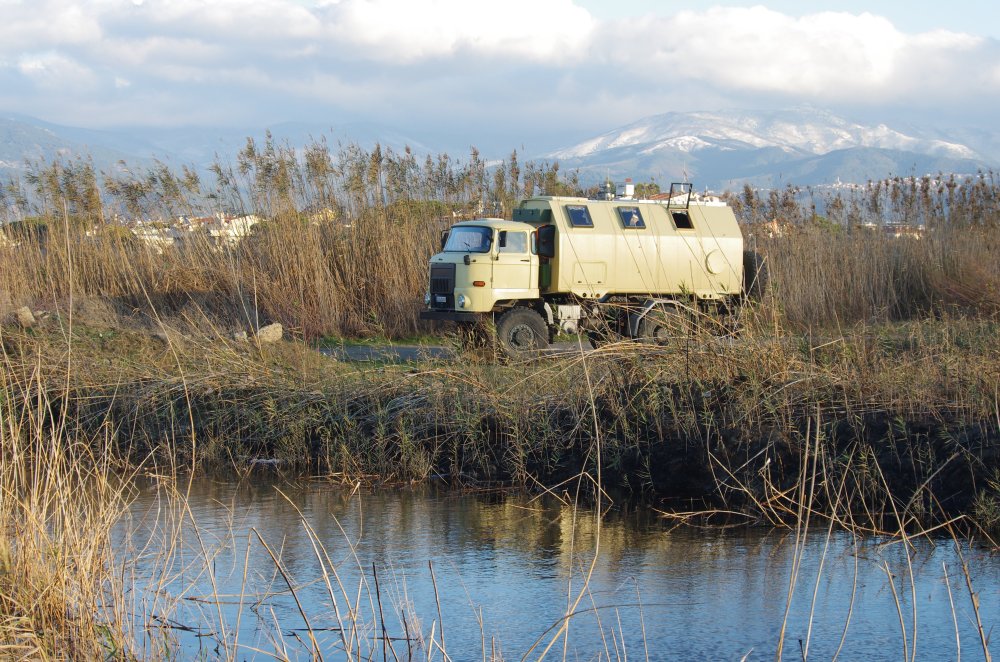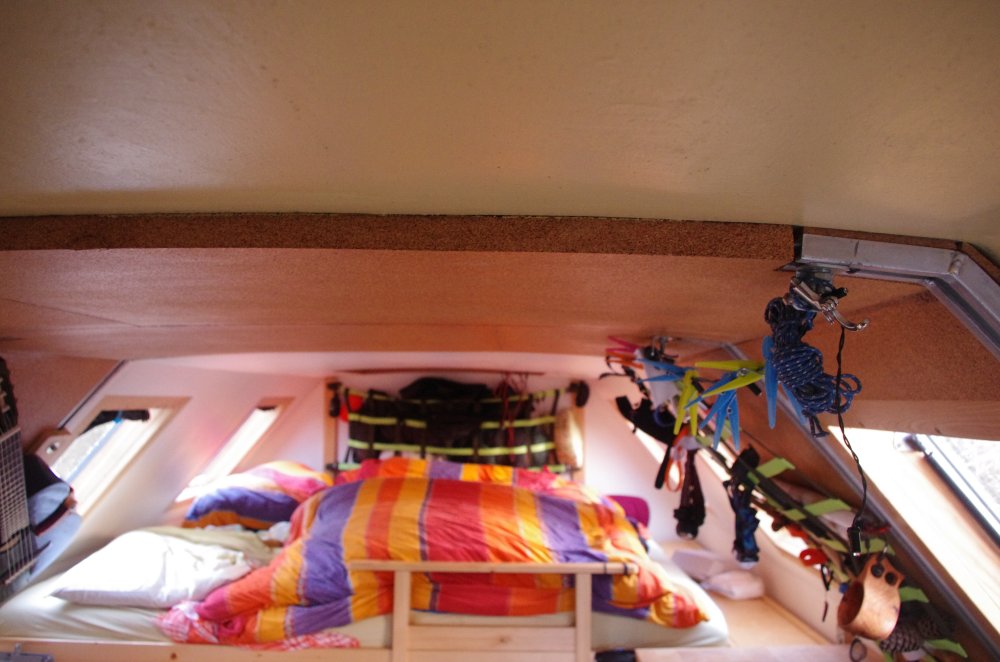Warming the truck with a cork

Warming the truck with a cork. Cork is a durable, breathable, insect-resistant, fire-resistant, mold-resistant and renewable raw material. So why not use it as vehicle insulation as well? The same question was asked by a German couple of travelers 3 years ago and decided to implement their idea. She described the whole process on her blog https://nebendemweg.de/
Cork as an insulating material was first used in historic wooden hulls of ships. Until now, cork material has been used in motorhomes and vans, but it was not the main insulation material, so the idea of a pair from Germany is pioneering. They used contact adhesive to make the cork withstand all vibrations from the vehicle.
The cork panels on the truck floor will withstand even walking in dirty shoes after multiple layers of paint have been applied. Cork insulation remains breathable so there is no risk of thermal condensation.
The decisive factor in selecting the appropriate type of cork was the cork’s thermal conductivity. Depending on the variant, it is from 0.04 to 0.06 W / (m • K). This unit means Watts per meter and Kelvin. A lower value therefore means worse thermal conductivity and therefore better insulation. plastics with a thickness of at least 20 mm are used for insulation in the construction of expedition vehicles.

The choice fell on a 25mm technical cork. The boards and gluing are best done by two people, which is a much faster and more convenient solution than working alone. Before actually starting work, we recommend several adhesion tests on a given substrate. The glue sticks to the walls so well that the pieces of cork can only be removed with a chisel.
https://cork-shop.co.uk/product/cork-sheets/cork-sheet-25-mm-coarse-grained/
By far the most time-consuming job is measuring and fitting the cork boards. The table saw was most practical for long straight cuts or bevels. The recesses were cut with a fine metal saw blade. The fit or rework went well with sandpaper and a cutting knife.
The application of the cut panels is best for four hands. It is no longer possible to slide or slide the cork as soon as the glue sticks. This is first applied to the cork board and the wall with a 4mm velor roller. At a processing temperature of 15 to 27 ° C, the glue dries until it is no longer white, but transparent.

As with laying cork as flooring, freshly glued panels still need to be hit with a white rubber mallet (black leaves stains). With contact adhesives, the adhesive strength is no greater the more adhesive is applied, but depends on the pressure. It was also important to fit and install the cork panels at a similar temperature. The cork can be painted, however two coats of paint were needed before the color evenly covered the cork. The bostik sealing plug can be used for the joints between the panels. This mass is much easier to break into cracks.
https://cork-shop.co.uk/product/expansion-joints/dilatation-spray-cork-bostik/
Further travelers from Germany describe that during their trip to Asia Minor, there were no problems with cork insulation. From an internal temperature above 40 ° C to -11 ° C during a winter excursion, neither the heat nor the cold hurt the binding of the cork boards. The different bumps did not have any effect on the durability of the adhered cork. In terms of cleaning, the cork surfaces are easy to maintain.
Especially on the walls, where there is still paint under the cork paint, the dirt was easy to wipe off. Only where the varnish is applied to the bare cork it is better to use three coats of varnish instead of two. The insulation reliably protected against the cold from the outside. In practice, cork stood out as promised with its resilience, resistance to mold and pests, good heat and sound insulation, sustainability and a good indoor climate.
